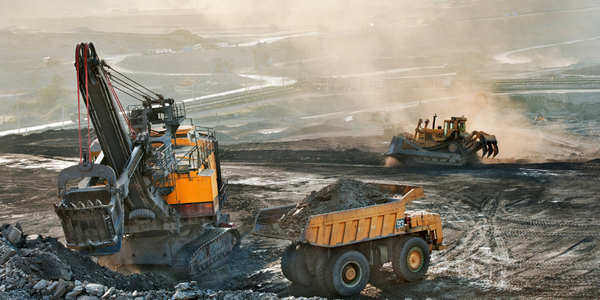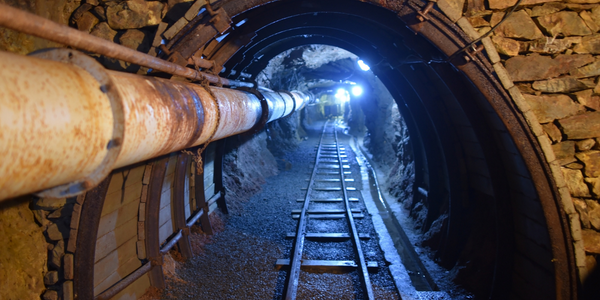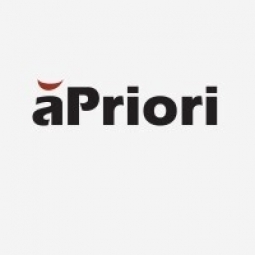Download PDF
Streamlining New Product Introduction Process with aPriori: A Caterpillar Case Study
Technology Category
- Application Infrastructure & Middleware - Event-Driven Application
- Functional Applications - Manufacturing Execution Systems (MES)
Applicable Industries
- Cement
- Mining
Applicable Functions
- Product Research & Development
- Quality Assurance
Use Cases
- Manufacturing Process Simulation
- Time Sensitive Networking
Services
- System Integration
- Testing & Certification
The Challenge
Caterpillar, a leading manufacturer of construction and mining equipment, diesel and natural gas engines, industrial gas turbines, and diesel-electric locomotives, was seeking to be more proactive with their cost and design decisions. The company was dealing with large, complex, interconnected, and interdependent product and part designs, which required a more proactive strategy for their product cost and design decisions. Caterpillar was also struggling with manual costing, which was time-consuming and less efficient. The company was trying to eliminate the need for cost reduction, which required additional resources and thus increased costs. Furthermore, Caterpillar was negotiating the cost of a part with a supplier for over a year without success.
About The Customer
Caterpillar is the world’s leading manufacturer of construction and mining equipment, diesel and natural gas engines, industrial gas turbines, and diesel-electric locomotives. The company employs over 107,700 employees and generates a revenue of $48.19 Billion. Caterpillar has been an aPriori customer for many years, with aPriori manufacturing insights deployments going on at different divisions around the company and around the world. In this case study, Steve Vito, a Supplier Collaboration Engineer in Caterpillar’s Paving Products Division, shares examples of how aPriori is instrumental for Caterpillar’s New Product Introduction (NPI) programs.
The Solution
Caterpillar turned to aPriori, a platform that provides manufacturing insights, to streamline their New Product Introduction (NPI) process. aPriori enabled Caterpillar to build a product cost model in less than an hour, including the custom weld which was a significant component of the cost. After making small tweaks to the cost model, Caterpillar sent the design and product quote to a different supplier, saving them over $1.1 Million. aPriori also helped Caterpillar to solve two business problems: should cost modeling and significantly streamlining the NPI process with aPriori digital factories. The platform's cost modeling software was utilized in each stage of the NPI process, saving time and money, and helping to make better design decisions. aPriori's digital factory simulation provided Caterpillar with the manufacturing insights they needed to get their design, quality, and cost goals right the first time.
Operational Impact
Quantitative Benefit
Related Case Studies.

Case Study
System 800xA at Indian Cement Plants
Chettinad Cement recognized that further efficiencies could be achieved in its cement manufacturing process. It looked to investing in comprehensive operational and control technologies to manage and derive productivity and energy efficiency gains from the assets on Line 2, their second plant in India.

Case Study
Underground Mining Safety
The goal was to produce a safety system to monitor and support underground mining operations; existing systems were either too simple (i.e. phone line) or overly complex and expensive, inhibiting deployment, and providing little-to-no support in event of an accident. Given the dangerous nature of the mining work environment and the strict regulations placed on the industry, the solution would have to comply with Mine Safety and Health Administration (MSHA) regulations. Yet the product needed to allow for simple deployment to truly be a groundbreaking solution - increasing miner safety and changing daily operations for the better.

Case Study
Mining Firm Quadruples Production, with Internet of Everything
Dundee Precious Metal’s flagship mine, in Chelopech, Bulgaria, produces a gold, copper, and silver concentrate set a goal to increase production by 30%. Dundee wanted to increase production quality and output without increasing headcount and resources, improve miner safety, and minimize cost.

Case Study
Fastenal Builds the Future of Manufacturing with MachineMetrics
Fastenal's objective was to better understand their machine downtime, utilization, quality issues, and to embrace cutting-edge manufacturing technology/process improvement capabilities to bring their team to the next level. However, there was a lack of real-time data, visualization, and actionable insights made this transition impossible.

Case Study
Joy Mining Systems
Joy equipment faces many challenges. The first is machine integration and control. The business end of the machine has a rapidly-spinning cylinder with 6-inch diamond-studded cutting teeth. It chews through rock at rates measured in tens of tons per minute. The system grinds through the rock in front, creating a rectangular mine tunnel. Hydraulic lifters support the ceiling as the machine moves forward. Automated drills and screws drive 3-ft long screws into the ceiling to stabilize it. The rock and coal fall into a set of gathering "fingers" below the cutting cylinder. These fingers scoop up the rock and coal and deposit it onto a conveyor belt. The conveyor passes under the machine and out the back. A train of conveyor belt cars, up to a mile long, follows the cutter into the mine. The rock shoots along this train at over 400 feet per minute until it empties into rail cars at the end. Current systems place an operator cage next to the cutter. Choking dust (potentially explosive), the risk of collapse and the proximity of metal and rock mayhem make the operator cage a hazardous location.






